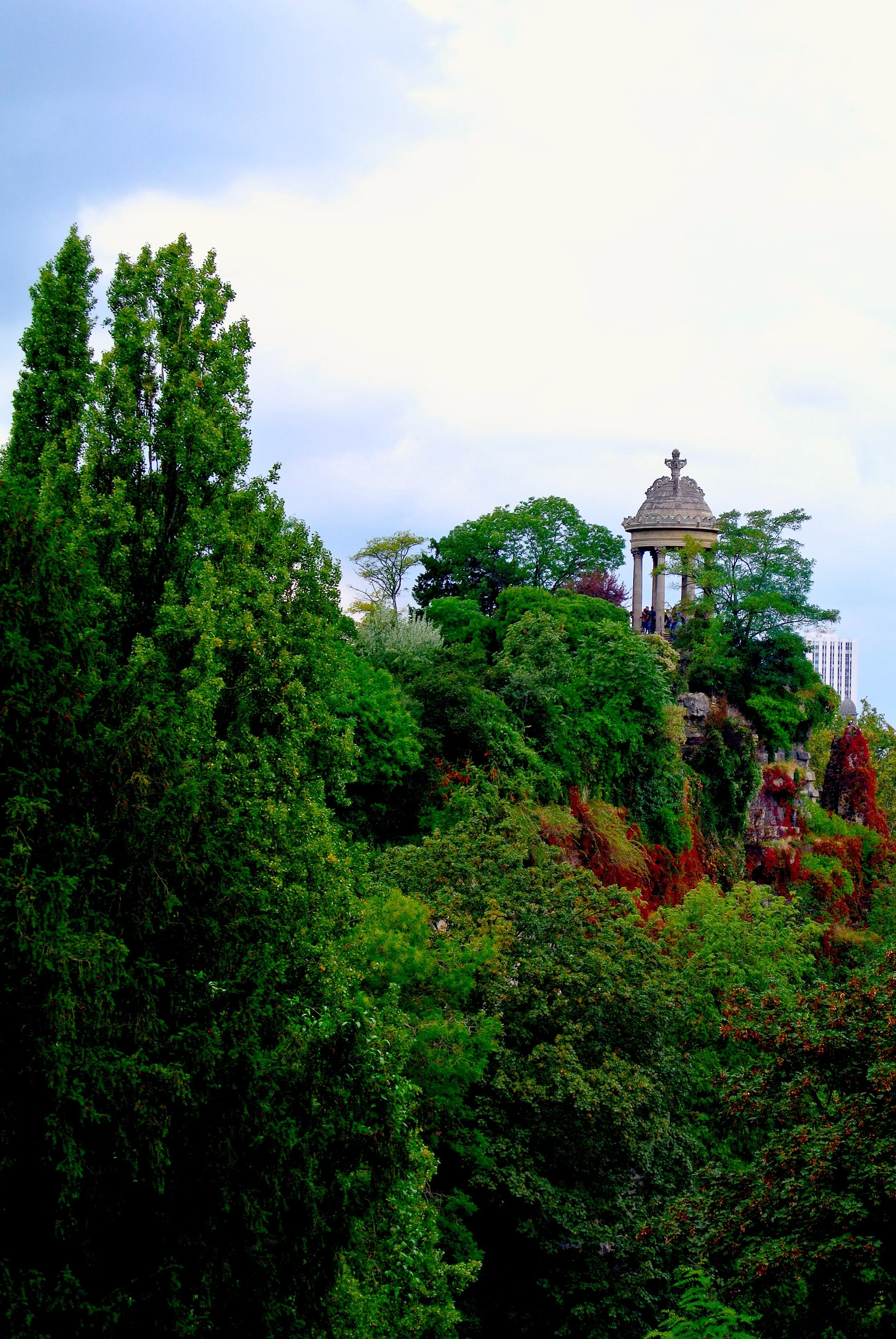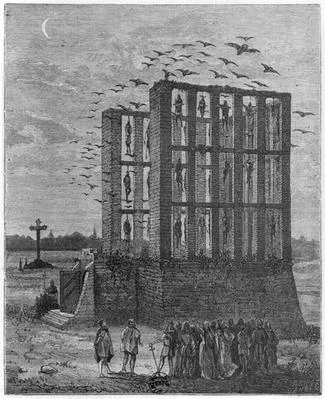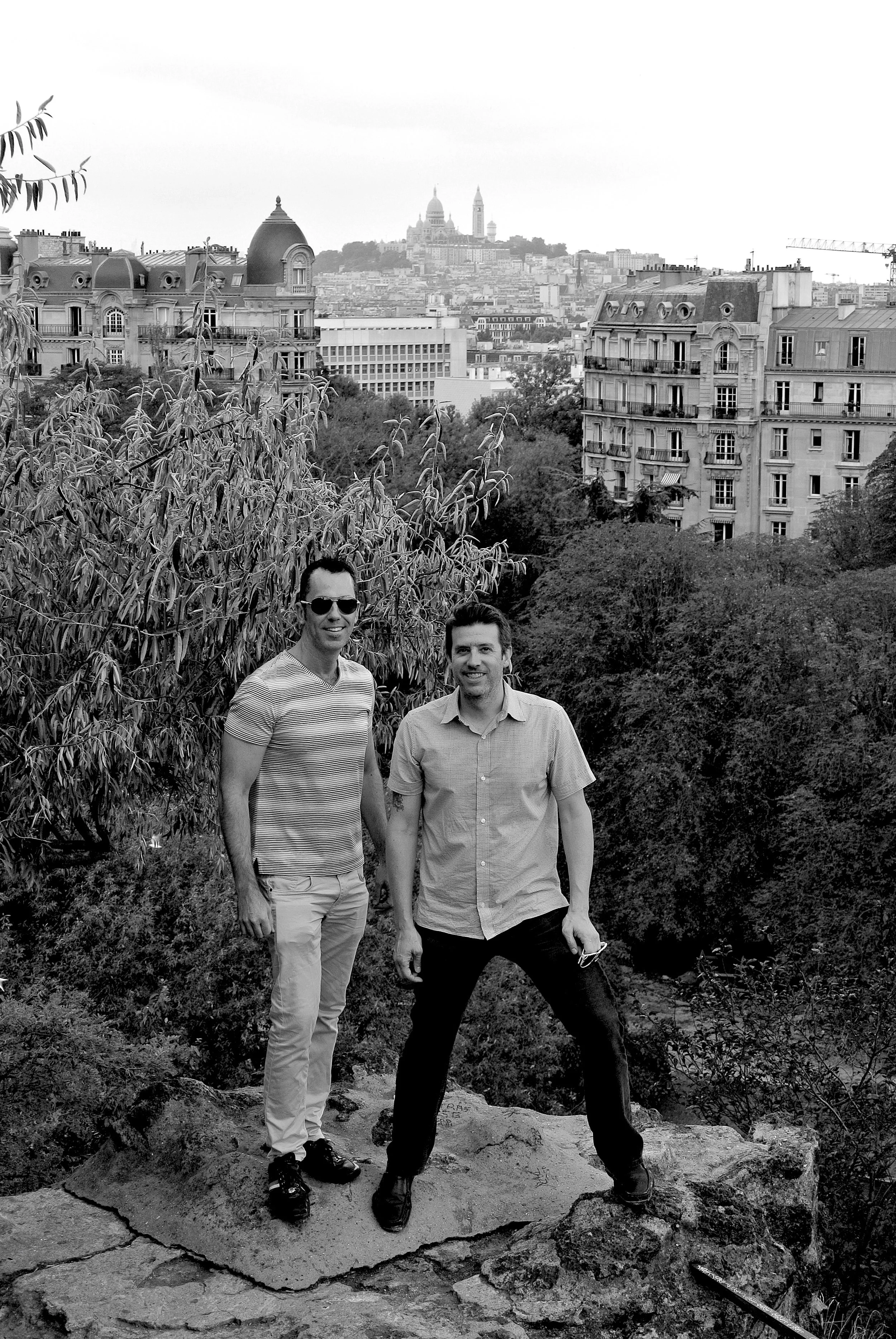What to do in Paris? Visit this off-the-beaten-path park. It’s lovely now but had a gruesome origin.
Parc des Buttes Chaumont isn’t at the top of tourists’ itineraries, but it’s a great natural break from the heart of the city
On a sunny Sunday afternoon, our friends Michael and Kent took us to one of their favorite spots in Paris: Parc des Buttes Chaumont, located in the 19th arrondissement. We took the Métro to the Botzaris Station and walked until we arrived at the park.
Michael and a couple friends who also happened to be visiting Paris, Jennifer and Kirsten, went off in search of the guinguette (defined in the 1750 Dictionnaire de la langue français, as a “small cabaret in the suburbs and the surrounds of Paris, where craftsmen drink in the summer and on Sundays and on Festival day”). It’s called Rosa Bonheur, but Michael refers to it as the “Log Cabin.”
“After the French Revolution, the tract of land became a refuse dump, a place for processing horse carcasses and a depository for sewage. ”
A historic postcard of the Temple of Sybille, the folly in Buttes Chaumont
Kent, Wally and I decided to wander the idyllic and hilly park. It’s hard to believe, but the site, which loosely translates to “Bald Mountain,” took its name from the once-barren land, which, because of the chemical composition of its soil, used to be almost free of vegetation.
Wally and Duke in the folly at Buttes Chaumont, a little-known park in Paris
This horrific structure, known as a gibbet, displayed hanged corpses on the site of what is now Parc des Buttes Chamont
Park Life
Before the 19th century, it was considered just outside the city limits and near the Gibbet of Montfaucon, the main gallows of the kings of France. The natural elevation made it well suited to displaying the bodies of hanged criminals in a multi-tiered gibbet, a scaffold of sorts, from the 13th century until 1760.
After the French Revolution, the tract of land became a refuse dump, a place for processing horse carcasses and a depository for sewage. Another part of the acreage was a former gypsum and limestone quarry.
Emperor Louis-Napoléon III envisioned a bucolic public park with meandering paths, water features and cliffs. Though it was hardly an ideal location for such a park, Buttes Chaumont was the very spot on which Georges-Eugène Haussmann, who was chosen by Napoleon III to carry out his vision, commissioned landscape architect and civil engineer Jean-Charles Alphand to construct.
Alphand reported that “the site spread infectious emanations not only to the neighboring areas, but, following the direction of the wind, over the entire city.”
Despite this, work commenced in 1864, and the park made its debut during the 1867 Exposition Universelle.
The Greek temple, or folly, at Buttes Chaumont affords a fantastic view of Montmartre, topped by Sacré Coeur cathedral
Kent, who lives in Paris, took us on a tour of the park
Even though Kent and Wally are joking around, there are some precarious perches in Buttes Chaumont — be careful!
Wally in the folly at Buttes Chaumont
We took a trail, crossing the Pont des Suicidés, or Suicide Bridge (at one point, it was a popular spot to off yourself), to reach the neo-Greek folly known as the Temple of Sybille. Perched atop a limestone cliff, it was inspired by the Temple of Vesta in Tivoli, Italy. From its vantage point, we could see the geometry of Paris laid out before us, with Sacré-Cœur Basilica glittering in the distance. –Duke
1, rue de Botzari
Paris, France
“The site spread infectious emanations not only to the neighboring areas, but, following the direction of the wind, over the entire city.”




























